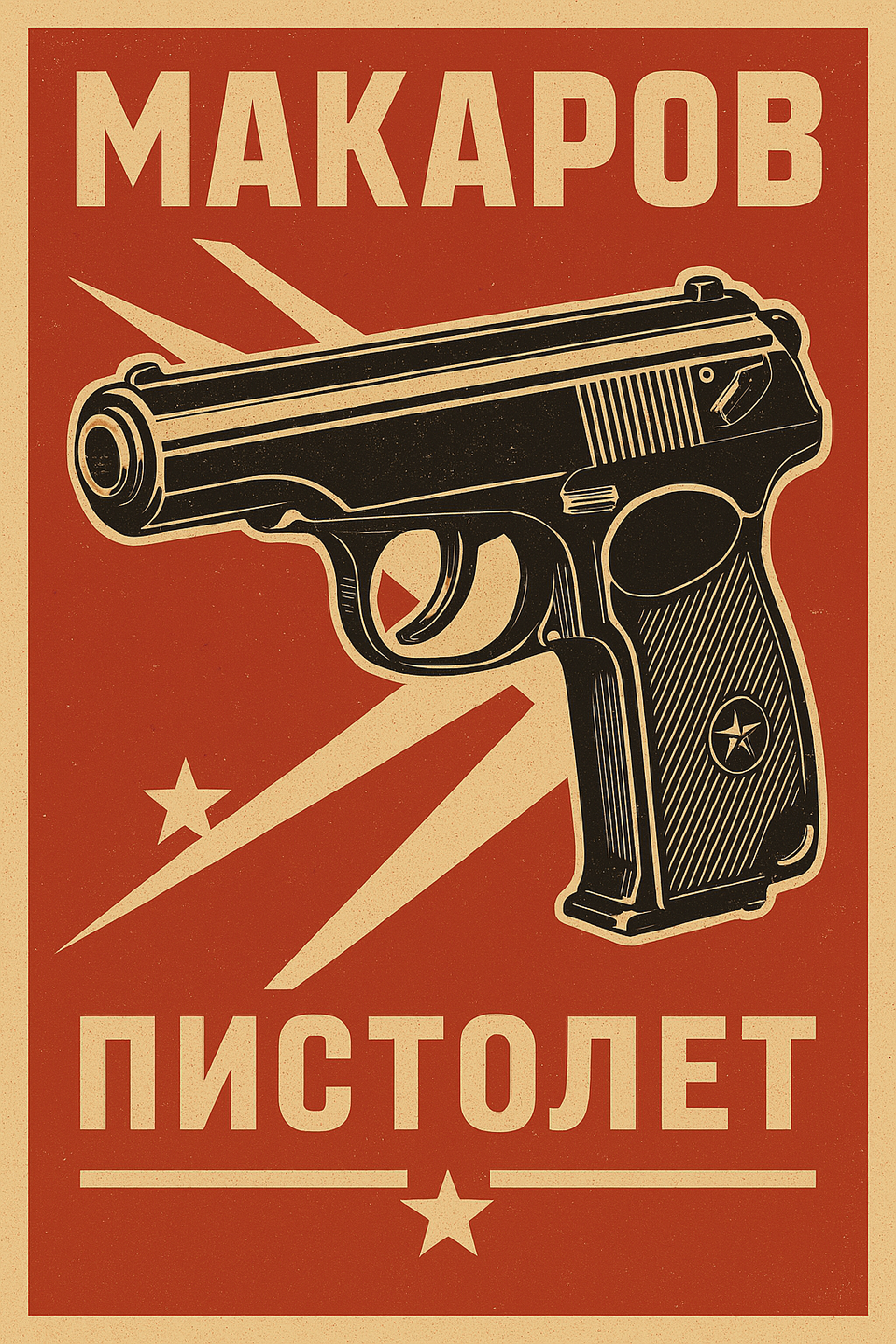The Makarov Playbook for Leaders Who Ship

Whenever my Head of Engineering and I interview candidates, we begin with a simple yet revealing question: What is the product you admire the most? It often reveals more about someone’s mindset than a full resume ever could. For me, the answer is clear: the Makarov pistol. Not because it is flashy or cutting-edge, but because it represents timeless engineering, design with intent, and leadership through clarity. This is the story, and the lesson, of the Makarov.
In the 1950s, the Soviet Union set out to replace the ageing TT-33 pistol. What they created was not merely a weapon. It was a masterclass in engineering, systems thinking, and strategic design. The Makarov pistol became a symbol of pragmatic brilliance: simple, reliable, durable, and widely adopted. Beneath that cold steel lies a framework from which modern IT leaders and teams would be wise to learn.
Why the Makarov Is a Masterpiece of Engineering
- Simplicity: Blowback-operated, fixed barrel, minimal moving parts. Less to break, easier to understand.
- Reliability: Designed to operate in harsh conditions with minimal maintenance.
- Constraint-Driven Innovation: Developed within strict design requirements—functionality under pressure.
- User-Centric Design: Can be field-stripped without tools. Built for real users, not engineers.
- Longevity: Outlasted many trendier weapons because it addressed core problems effectively.
IT Parallels – What Can We Learn?
- Simplicity Scales: The best systems are often the least complex. Complexity is a liability.
- Reliable Is Greater Than Flashy: Like the Makarov, a stable system that simply functions outperforms bleeding-edge technology with reliability issues.
- Constraints Drive Quality: The best products are forged in the fire of limitation. Time, budget, and legacy code, all act as fuel for real creativity.
- Design for the People Who Use It: Whether engineers, operations, or users … build for them, not for the presentation.
- Maintainability Is Strategy: The pistol could be disassembled in the field. Excellent systems are observable, debuggable, and deliberately unremarkable in the best possible way.
Lessons from the Development Phase
- Cross-Functional Alignment from the Start: The Makarov’s development brought together engineering, manufacturing, training, and operational functions early in the process. This avoided handover friction and ensured the solution was coherent across the entire lifecycle.
- Intentional Trade-Offs: The team made deliberate choices not to pursue modularity or advanced features, knowing that simplicity, speed of production, and durability mattered more for the context. Not every good idea made the cut. Only the right ones.
- Continuous Relevance Without Constant Reinvention: Unlike many modern products that rely on constant iteration, the Makarov retained its relevance for decades with minimal redesign. It focused on solving core needs thoroughly, rather than chasing every trend.
- Cultural Context and Change Readiness: Operating within a rigid, top-down military culture, the team still achieved broad adoption. By introducing the change transparently and aligning it with clear benefits to all stakeholders, they built readiness even in a system known for resistance.
- Transparent Communication: The development of the Makarov was not shrouded in secrecy. Its purpose, progress, and trade-offs were openly shared with military stakeholders, which built trust and encouraged buy-in long before full deployment.
- Strategic Signalling: By clearly communicating the intent to replace the TT-33 and framing it around user benefits, the team generated anticipation and alignment, both top-down and bottom-up.
- Clarity in Problem Framing: Replace the TT-33. Must use 9x18mm. Must be affordable, reliable, and easy to train with. No embellishment.
- Borrow and Improve: The design drew inspiration from the Walther PP—but it was purposefully refined, not simply replicated. They did not merely replicate; they evolved.
- Iterate with Real Feedback: Prototypes were tested in the field. Feedback loops were rapid and practical.
- Subtraction over Addition: The final design had approximately 27 parts. Simplicity was not incidental. It was intentional.
- Empathy in Design: Soldiers, not engineers, were the users. Maintenance without tools? That is true user experience.
Quality Was Not a Phase. It Was the Design
The Makarov did not rely on after-the-fact inspections or last-minute quality assurance. Quality was the natural result of clarity, simplicity, and empathy.
- Fewer parts equate to fewer failure points.
- Fixed barrel leads to more predictable performance.
- Tool-less maintenance makes problems easier to identify and resolve.
It was not made perfect. It was made resilient.
Robustness and Reliability Were Non-Negotiable
The Makarov was expected to function in mud, snow, and sand. There was no tolerance for fragility. This demanded:
- Materials capable of enduring abuse.
- Tolerances that allowed for operation even when dirty.
- A design that anticipated failure—and made recovery straightforward.
In IT, reliability, quality, and performance are often treated as optional enhancements. The Makarov serves as a reminder:
Quality, performance, and robustness were not side features—they were acceptance criteria.
They ought to be for us as well.
The Hidden OKRs: Engineering for Adoption
If the Makarov team had written OKRs, they might have looked like this:
Objective: Soviet forces adopt the Makarov pistol as a sidearm, and recommend its readiness, reliability, and reduced training time.
Key Results:
- Replace the TT-33 across all Soviet military branches within five years
- Reduce maintenance time per unit by 40%
- Decrease training time for recruits by 50%
- Ensure manufacturing cost per unit remains under budget
- Achieve zero major design changes after the first year of rollout
They did not merely meet these goals. They engineered for them.
From Adopters to Promoters
The Makarov was not imposed on the field. It was welcomed. Over time, it built a reputation for reliability so strong that even when newer sidearms emerged, many soldiers and officers continued to request the Makarov. In numerous post-Soviet states, it remained in active use well into the 21st century, not due to nostalgia, but because it continued to deliver.
This is not mere adoption. This is advocacy.
IT Parallel
When engineers, users, or partners begin recommending your system to others, without prompting, that is the sign of something built to last. Adoption is commendable. Evangelism is invaluable.
People do not promote what they merely use.They promote what they trust.





Member discussion